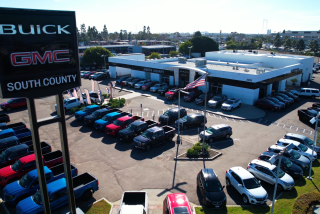Growing Glut of Unsold Cars May Force Cutbacks : 1985 U.S. Auto Production Highest in 6 Years
DETROIT — U.S. auto production in 1985 surged to its highest level in six years, the auto industry reported Thursday, but analysts warned that output may soon have to be slashed to reduce a growing glut of unsold domestic cars.
The domestic auto makers (excluding the U.S. operations of Honda, which will report its figures next week) said Thursday that they built a total of 8.04 million cars in 1985, up 5.3% from 1984’s level of 7.63 million. Including an unofficial estimate for Honda’s U.S. production of 145,000 units, total industry production reached 8.18 million in 1985, the first year since 1979 that the domestic industry has produced more than 8 million cars.
Thanks to skyrocketing demand for light pickups, U.S. truck production also soared during the year to 3.31 million units, up 9.9% from 1984’s level of 3.01 million. Combined car and truck production in the United States rose to a total of 11.35 million units, up 6.6% from the 1984 production level of 10.65 million.
But industry analysts noted that the major U.S. auto makers, especially General Motors, have been overly aggressive in their passenger car production plans in recent months and may have to cut back in early 1986 to reduce their inventories of unsold cars.
At the end of November, inventories of unsold domestic cars surged to more than 1.6 million units, equal to a 78-day supply; a 60-day supply is considered normal in the industry. At the time, GM had the highest inventories, with a 85-day supply of cars on hand, forcing the industry leader to offer discount consumer financing in late December to spur its lagging sales.
The imports have also been adding to the pressure on the domestics. Led by the Japanese, the importers have been gradually increasing their share of the market over the past few months, making the aggressive domestic production levels seem even more unrealistic, analysts believe.
“Unless domestic sales come up pretty soon, the domestics will have to cut production pretty drastically,” said Ted Sullivan, automotive analyst with Data Resources, an economic forecasting firm in Lexington, Mass. “We think total vehicle production in 1986 will have to be about 1 million units lower than it was in 1985, with most of the cuts coming in passenger cars.”
In fact, GM has already begun to reduce its ambitious first-quarter production plans. A recent report in Ward’s Automotive Reports, an industry trade journal, said that, in late December, GM reduced its first-quarter production goal by 39,000 units. Still, Chrysler, which is trying to make up some of the production that it lost due to last fall’s nationwide strike, has raised its first-quarter target by 38,000 units, offsetting GM’s cutbacks.
Ford, which has much lower inventories than GM because of long production delays on several of its newly introduced models, also raised its first-quarter schedule by 5,000 units, according to Ward’s.
Among the major domestic firms, GM posted the biggest increase in car production for 1985. Including the output from its U.S. joint venture with Toyota, GM built 4.88 million passenger cars in the United States during the year, up 12.5% from the 4.34 million units that it produced in 1984. By contrast, Ford’s U.S. operations produced just 1.63 million passenger cars, down 7.8% from 1984’s level of 1.77 million.
Meanwhile, Chrysler’s U.S. car production rose to 1.26 million units, up 1.5% from the previous year’s 1.24 million. American Motors suffered the biggest decline of any of the domestics in 1985, producing just 111,138 cars during the year, down 42.2% from 1984’s 192,196.
Volkswagen of America reported a 29% gain, with its production rising to 96,458 from 1984’s level of 74,785. Nissan, in its first year of domestic production, said it built 43,810 passenger cars in its Tennessee plant in 1985.






